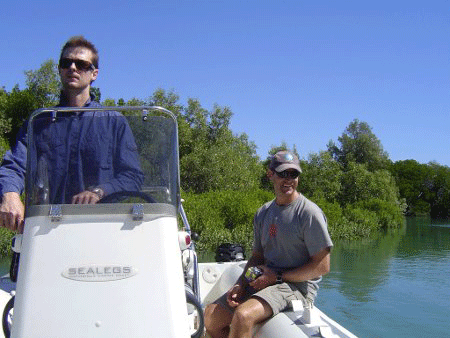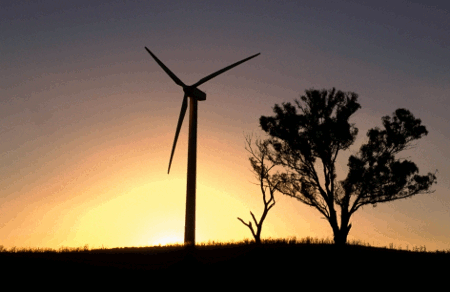
|
Published: 19 September 2011
Return visit sets up Kimberley research
A trio of marine scientists returned to Western Australia's Kimberley region in August to discuss research needs driven by expanding tourism and onshore and offshore oil and gas production.

|
|
James Brown (left), owner of Cygnet Bay Pearls, shows CSIRO's Damian Thomson through the variety of coastal habitats in the area. Credit: CSIRO
|
Dr John Keesing, Dr Mat Vanderklift and Dr Damian Thomson from the Wealth from Oceans Flagship at CSIRO mapped habitats and recorded marine biodiversity along the western coast of Dampier Peninsula in 2008.
This time they visited Cygnet Bay in the western part of King Sound, where Cygnet Bay Pearls, which has operated there since 1946, has established the Kimberley Marine Research Station.
The location offers access to rich marine and coastal habitats, from sandy beaches and rocky shores to extensive mangrove forests and creeks, and coral reefs along the coast and offshore islands.
King Sound receives runoff from the Fitzroy River, the largest river between Broome and the Ord River, and is an ideal location to study the influence of annual freshwater flows into the sea.
The Wealth from Oceans Flagship began exploring this and other factors influencing primary production in the Kimberley last year with a voyage of the Marine National Facility Research Vessel Southern Surveyor, led by Peter Thompson.
The researchers also visited the Ardyaloon community at One Arm Point, near Cape Leveque, and met the Bardi Jawi Rangers whose people have native title to the island areas off the northern Dampier Peninsula.
The Kimberley Land Council-facilitated rangers have a wealth of local and traditional knowledge of the local land and waters, as well as significant research experience. They have helped researchers from Edith Cowan University to track dugong movements along the Dampier Peninsula using satellite tags.
Their discussions identified areas in which CSIRO and the Bardi Jawi community could combine traditional knowledge and modern research technologies, noting that all projects would need to seek approval from native title holders for operations on traditional lands.
Source: CSIRO
Contact: bryony.bennett@csiro.au



